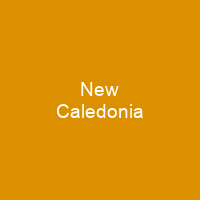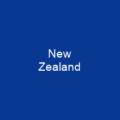New Caledonia is a special collectivity of France in the southwest Pacific Ocean, south of Vanuatu. It is about 1,210 km east of Australia and 17,000 km from Metropolitan France. The capital of the territory is Nouméa, and it is divided into three provinces: North and South Provinces, and Loyalty Island Province.
About New Caledonia in brief

The island became a penal colony in 1864, and France sent about 22,.000 political prisoners and prisoners of war there from 1864 to 1897. It was founded on 24 September 1853 by Emperor Napoleon III, under orders from Admiral Febvrier Despointes III, and took formal possession of the island on 25 June 1854. It has a land area of 18,576 km2, divided into two provinces: the North Province and the South Province. The North Province is on the mainland, while the South province is off the coast of the mainland in the Coral Sea. In the early decades of the twentieth century, the trade involved relocating children from the Loyalies to the Grand Terre for labour in plantation agriculture. As trade in sandalwood declined, it was replaced by a new business enterprise, \”blackbirding\”, a euphemism for taking Melanesian or Western Pacific Islanders into indentured or forced labour in the sugar cane plantations in Fiji and Queensland by various methods of trickery and deception. In later years indenture systems were developed; however, when it came to the French slave trade, very few regulations were implemented. In 1894, the French government abolished the slave trade between the New Hebrides, New Guinea, and New Guinea. The French government also abolished the practice of’recruitment’ of Melanesians on ships.
You want to know more about New Caledonia?
This page is based on the article New Caledonia published in Wikipedia (as of Jan. 04, 2021) and was automatically summarized using artificial intelligence.







